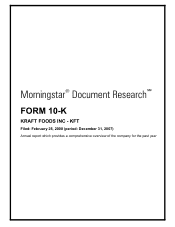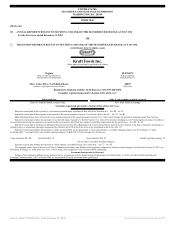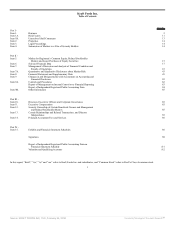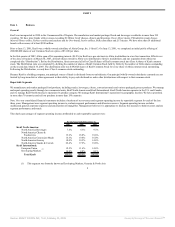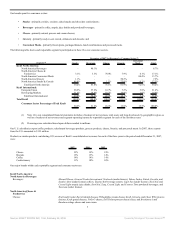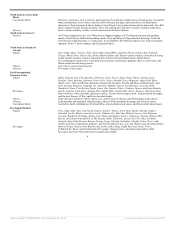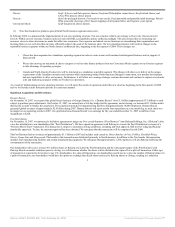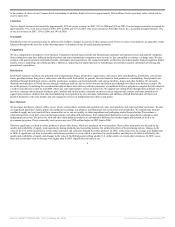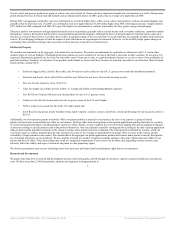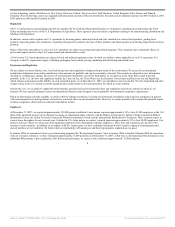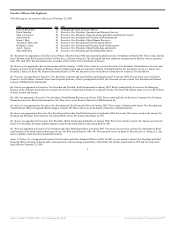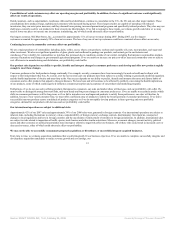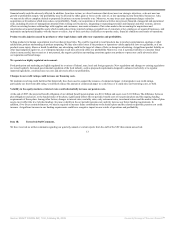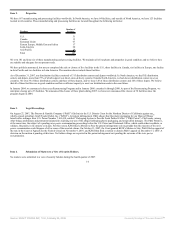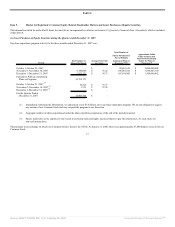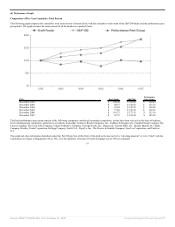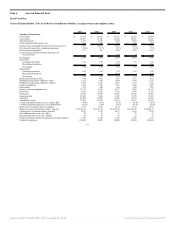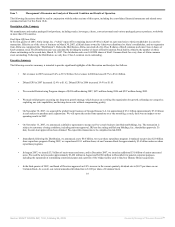Kraft 2008 Annual Report Download - page 10
Download and view the complete annual report
Please find page 10 of the 2008 Kraft annual report below. You can navigate through the pages in the report by either clicking on the pages listed below, or by using the keyword search tool below to find specific information within the annual report.
six key technology centers: East Hanover, New Jersey; Glenview, Illinois; Tarrytown, New York; Banbury, United Kingdom; Paris, France; and Munich,
Germany. These technology centers are equipped with pilot plants and state-of-the-art instruments. Research and development expense was $447 million in 2007,
$419 million in 2006 and $385 million in 2005.
Regulation
Our U.S. food products and packaging materials are regulated by the Food and Drug Administration or, for products containing meat and poultry, the Food
Safety and Inspection Service of the U.S. Department of Agriculture. These agencies enact and enforce regulations relating to the manufacturing, distribution and
labeling of food products.
In addition, various states regulate our U.S. operations by licensing plants, enforcing federal and state standards for selected food products, grading food
products, inspecting plants and warehouses, regulating trade practices related to the sale of dairy products and imposing their own labeling requirements on food
products.
Many of the food commodities we use in our U.S. operations are subject to governmental agricultural programs. These programs have substantial effects on
prices and supplies and are subject to Congressional and administrative review.
All of our non-U.S.-based operations are subject to local and national regulations some of which are similar to those applicable to our U.S. operations. For
example, in the EU, requirements apply to labeling, packaging, food content, pricing, marketing and advertising and related areas.
Environmental Regulation
We are subject to various federal, state, local and foreign laws and regulations relating to the protection of the environment. We accrue for environmental
remediation obligations on an undiscounted basis when amounts are probable and can be reasonably estimated. The accruals are adjusted as new information
develops or circumstances change. Recoveries of environmental remediation costs from third parties are recorded as assets when their receipt is deemed
probable. In the U.S., the laws and regulations include the Clean Air Act, the Clean Water Act, the Resource Conservation and Recovery Act and Superfund,
which imposes joint and severable liability on each responsible party. As of December 31, 2007, our subsidiaries were involved in 70 active Superfund and other
similar actions in the U.S. related to current operations and certain former or divested operations for which we retain liability.
Outside the U.S., we are subject to applicable multi-national, national and local environmental laws and regulations in the host countries in which we do
business. We have specific programs across our international business units designed to meet applicable environmental compliance requirements.
Based on information currently available, we believe that the ultimate resolution of existing environmental remediation actions and our compliance in general
with environmental laws and regulations will not have a material effect on our financial results. However, we cannot quantify with certainty the potential impact
of future compliance efforts and environmental remediation actions.
Employees
At December 31, 2007, we employed approximately 103,000 people worldwide. Labor unions represent approximately 30% of our 41,000 employees in the U.S.
Most of the unionized workers at our domestic locations are represented under contracts with the Bakery, Confectionery, Tobacco Workers and Grain Millers
International Union; the United Food and Commercial Workers International Union; and the International Brotherhood of Teamsters. These contracts expire at
various times throughout the next several years. Outside the U.S., labor unions or workers’ councils represent approximately 55% of our 62,000 employees. Our
business units are subject to various laws and regulations relating to their relationships with their employees. These laws and regulations are specific to the
location of each enterprise. In addition, in accordance with EU requirements, we have established European Works Councils composed of management and
elected members of our workforce. We believe that our relationships with employees and their representative organizations are good.
In January 2004, we announced a three-year restructuring program (the “Restructuring Program”) and, in January 2006, extended it through 2008. In connection
with our severance initiatives, we have eliminated approximately 11,000 positions as of December 31, 2007; at that time we had announced the elimination of an
additional 400 positions. Upon completion of the Restructuring Program, we expect to have eliminated approximately 13,500 positions.
8
Source: KRAFT FOODS INC, 10-K, February 25, 2008 Powered by Morningstar® Document Research℠

